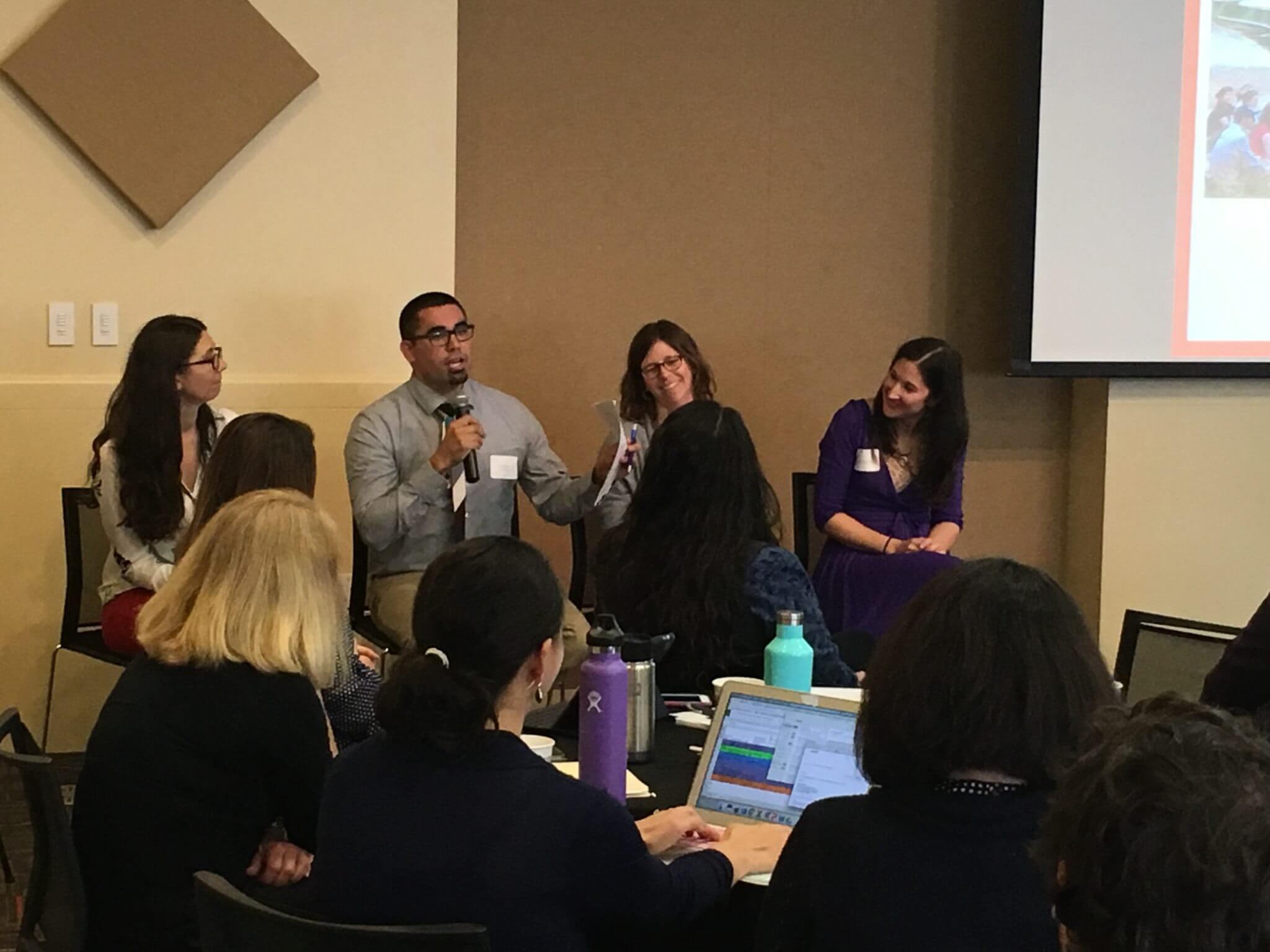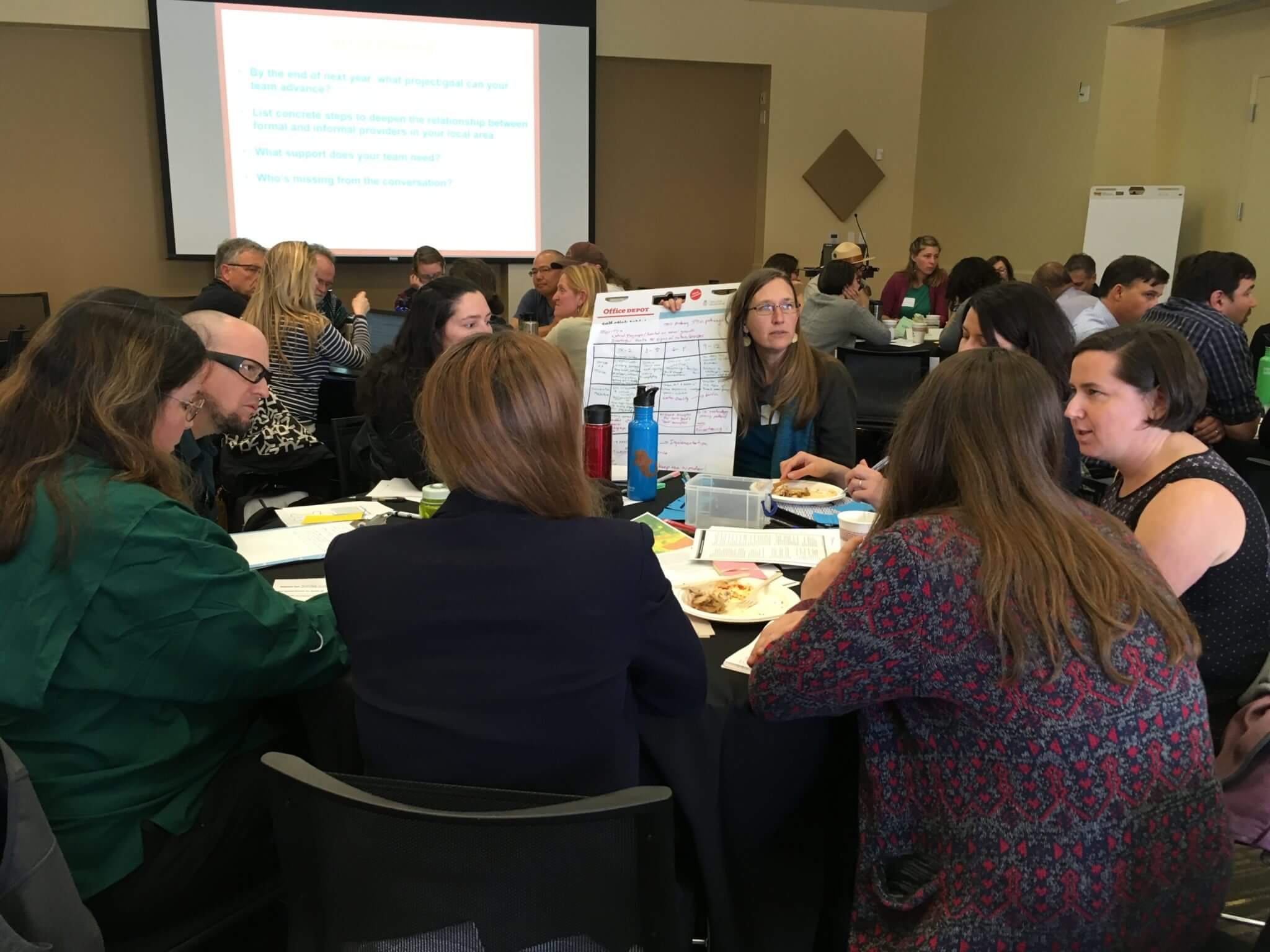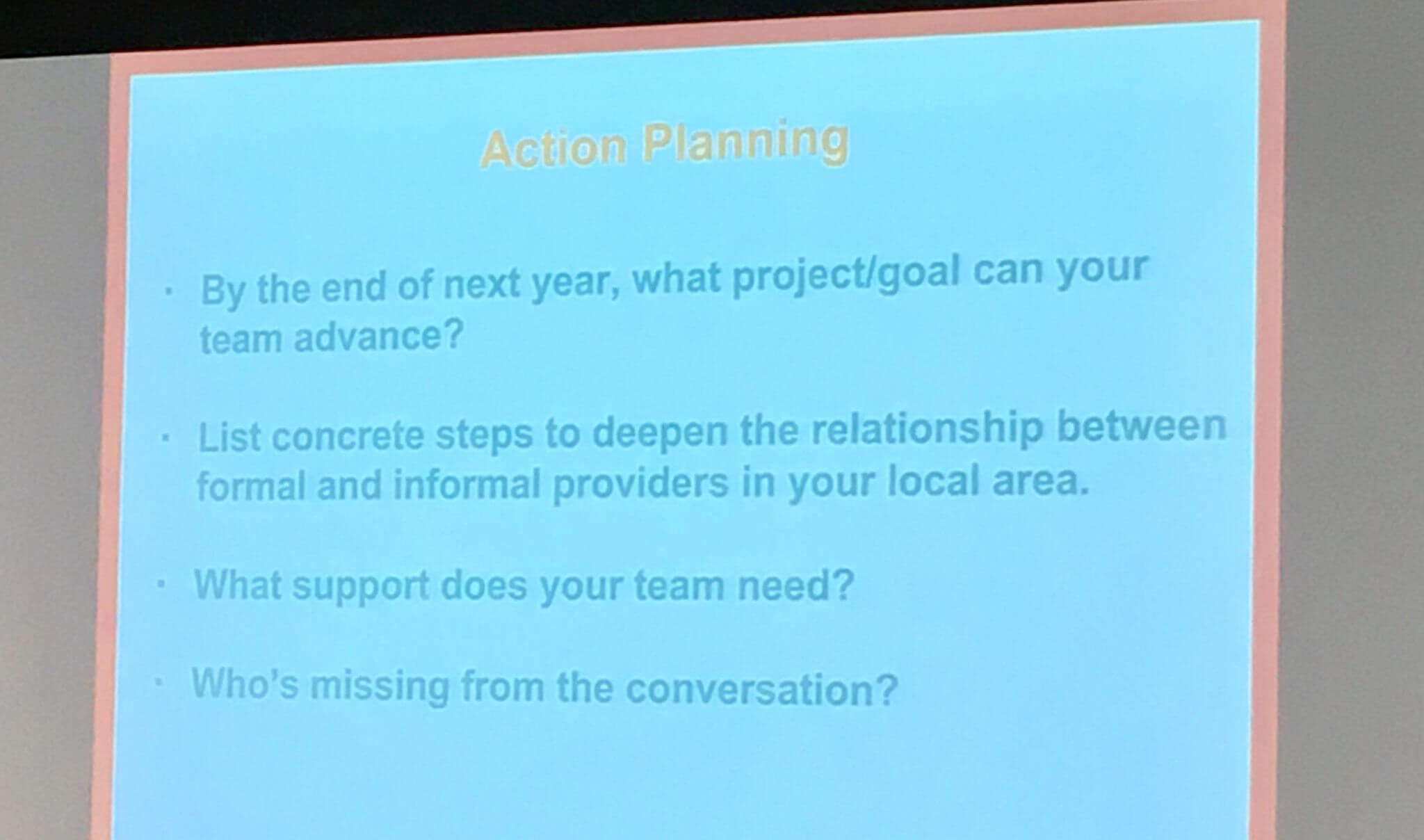In her blog post earlier this year, Ten Strands Board member Sheila Nahi provided an unequivocal yes to the question of whether we are still in a ‘Goldilocks moment’ to achieve environmental literacy in California, as first posed by Ten Strands Founder and President Will Parish in July 2015. With the active implementation of A Blueprint for Environmental Literacy underway, the goal of setting systems in place to ensure that environmental literacy becomes a reality for our 6.2 million students is indeed possible—but only with coordinated, collaborative action, especially at the local level.
Whether it’s called strategic partnership, network-driven change, or collective impact, social change leaders have come to recognize that collaborative action is necessary to address our increasingly urgent social and environmental problems. When it comes to environmental literacy, a cross-sector network of district-level and community organizations is needed to provide the means to implement a K–12 pathway of experiences for students to learn about and within the environment. In the San Francisco and Monterey Bay areas, ChangeScale is helping to build these partnerships.
Partnerships Are Key to Environmental Literacy
On March 23, ChangeScale brought together formal educators, environmental education providers, funders, and other partners to discuss Advancing Environmental Literacy through School Partnerships. ChangeScale has been leading such convenings since its launch in 2014. With its School Partnership Initiative, ChangeScale is providing support for cross-sector, school district-level partnerships around environmental literacy. With moderator Candice Dickens-Russell of TreePeople, panelists representing two districts and a county office of education involved in the initiative captured the audience’s attention at the David Brower Center in Berkeley. Here is a snapshot of how the districts and county office of education are transforming their schools to reach the goal of environmental literacy:
- Michele Kuttner, a second-grade teacher in the Alameda Unified School District which serves 9,600 students, shared the district’s vision for teaching hands-on environmental literacy through changes such as a garden with a dedicated instructor at every elementary school, a nature center at every high school, increased waste diversion rates, and enabling all students to participate in fields trips to nearby natural places.Michele emphasized that systemic, long-term partnerships with environmental education providers were essential in supporting teachers’ instruction outdoors, connecting students to nature within their community, and implementing standards-based environmental education. With ChangeScale’s support, Alameda USD’s School Partnership Team is developing environmental literacy experiences by grade level and plans are underway for a summer institute at which teachers and providers will strategize long-term planning for environmental literacy. Alameda teachers and their supportive district Superintendent Sean McPhetridge are leading the way for education that integrates environmental literacy for all students.
- The Pajaro Valley Unified School District serves 20,000 students across 33 schools in Watsonville and the surrounding agricultural communities. District Science Coordinator Rob Hoffman shared the district’s plans for teaching California’s recently adopted Next Generation Science Standards (NGSS) with themes relevant to the students’ communities, including ocean science, agriculture and food systems, and watersheds. With ChangeScale’s support over the past year-and-a-half, Rob and the district’s School Partnership Team have been conducting a landscape analysis of in-class and out-of-class environmental literacy learning experiences mapped to the standards, aligning with the state’s shift in the vision for science instruction. Rob and elementary lead teachers are pivotal in advancing these planning stages, including getting ready for a K–2 teacher–provider planning institute similar to Alameda USD.
- The San Mateo County Office of Education supports 23 school districts serving 100,000 students. STEM Director Rebecca Vyduna shared how K–12 environmental education is becoming an important part of the countywide vision for excellence and equity in education. A design-thinking workshop that brought together formal educators, environmental education providers, and other partners helped lay the foundation for this initiative. The county office now regularly supports this cross-sector partnership for environmental literacy through its San Mateo Environmental Learning Collaborative. The collaborative is entering its third year of bringing together teachers and environmental education providers through a summer institute to design, share, and assess project-based, standards-aligned units of study that use the environment as context for learning. County Superintendent Anne Campbell has provided leadership for this initiative, and they are in the process of hiring an Environmental Education Coordinator to provide backbone support for the initiative. This includes facilitation of sharing best practices among districts, starting with the early adopters of environmental literacy curriculum and learning experiences.
These districts are leading the way for environmental literacy through collaboration within their communities. What can other districts learn from this pioneering work? The increased investment in collaborative approaches to social change has led to the formation of successful networking models, including Collective Impact, Network Leadership Principles for Collaborative Success and Effective Impact Networks, which were collectively built from the experience and evaluation of hundreds of social impact collaboratives. In conducting research for the Environmental Literacy Steering Committee last year on cross-sector partnerships for environmental literacy, I discovered that many elements from these successful models are evident in the partnership work taking place in Alameda, Pajaro Valley, and San Mateo County: visionary network leaders; mutually reinforcing activities; time together for co-creation; and backbone support.
Visionary Network Leaders
Successful collaborations need leaders who can communicate a vision of working differently, and who inspire others to get involved. This requires being a network connector who can bring together diverse individuals and organizations around a common agenda. In district-level partnerships, superintendents play an important role in directing attention and resources such as Local Control and Accountability Plan funding to environmental literacy, and also in forming partnerships with local organizations, funders, and other potential partners. These networks are being activated by leaders like Michele, Rob, Anne, and Rebecca, who are driving the work forward by engaging their schools and communities. Such promising cross-sector partnerships started with the vision of a leader who could articulate the importance of environmental literacy for their students, and the role of collaborative and educational approaches in its promotion.
Mutually Reinforcing Activities
One of the five conditions of success in the Collective Impact framework is a focus on the coordination of activities among partners towards a common vision. In the partnerships profiled above, much effort is being made to align the agendas of schools and teachers with that of local environmental education providers in support of environmental literacy. Leaders like Rob and Michele see this as critical in not adding another expectation or layer of responsibility to teachers on top of existing curriculum standards. Rather, they have engaged the participation of other organizations to align with NGSS, which teachers are already expected to teach. This approach of building on the existing activities and strengths of all partners motivates and enables coordinated action.
Time Together and Co-creation
At the local level, getting the necessary stakeholders together in one room on a regular basis is critical to fostering a sense of teamwork that will sustain future partnerships. This time together to strategize plans of action creates the foundation for building student learning experiences, uniting the strengths of all partners. Pajaro Valley USD, Alameda USD, and San Mateo County Office of Education are all making this important time for co-creation a priority through summer institutes and ongoing workshops during the school year. The project-based, student-directed curriculum units developed at the San Mateo Environmental Learning Collaborative are one example of the power of co-creation.
Backbone Support
Many environmental education partnerships exist in California but few have the structure, coordination, diverse membership, and evaluation capacity to deeply integrate environmental literacy into pathways for student learning. Dedicated backbone support provides these necessary components and creates effective collaboration. The San Mateo County Office of Education is beginning to provide this support for district-level partnerships in their county, and ChangeScale is providing support for Pajaro Valley USD, Alameda USD, and other districts in the San Francisco and Monterey Bay areas.
For environmental literacy to be achieved throughout California, investment in district-level, cross-sector partnership is critical. With backbone support, visionary network leadership can be catalyzed into the strategic coordination of activities that will transform students’ learning experiences into pathways toward environmental literacy. As a ‘Goldilocks moment’ for environmental literacy, the time is upon us to create transformative impact on how students learn both within and about their environment in California.





